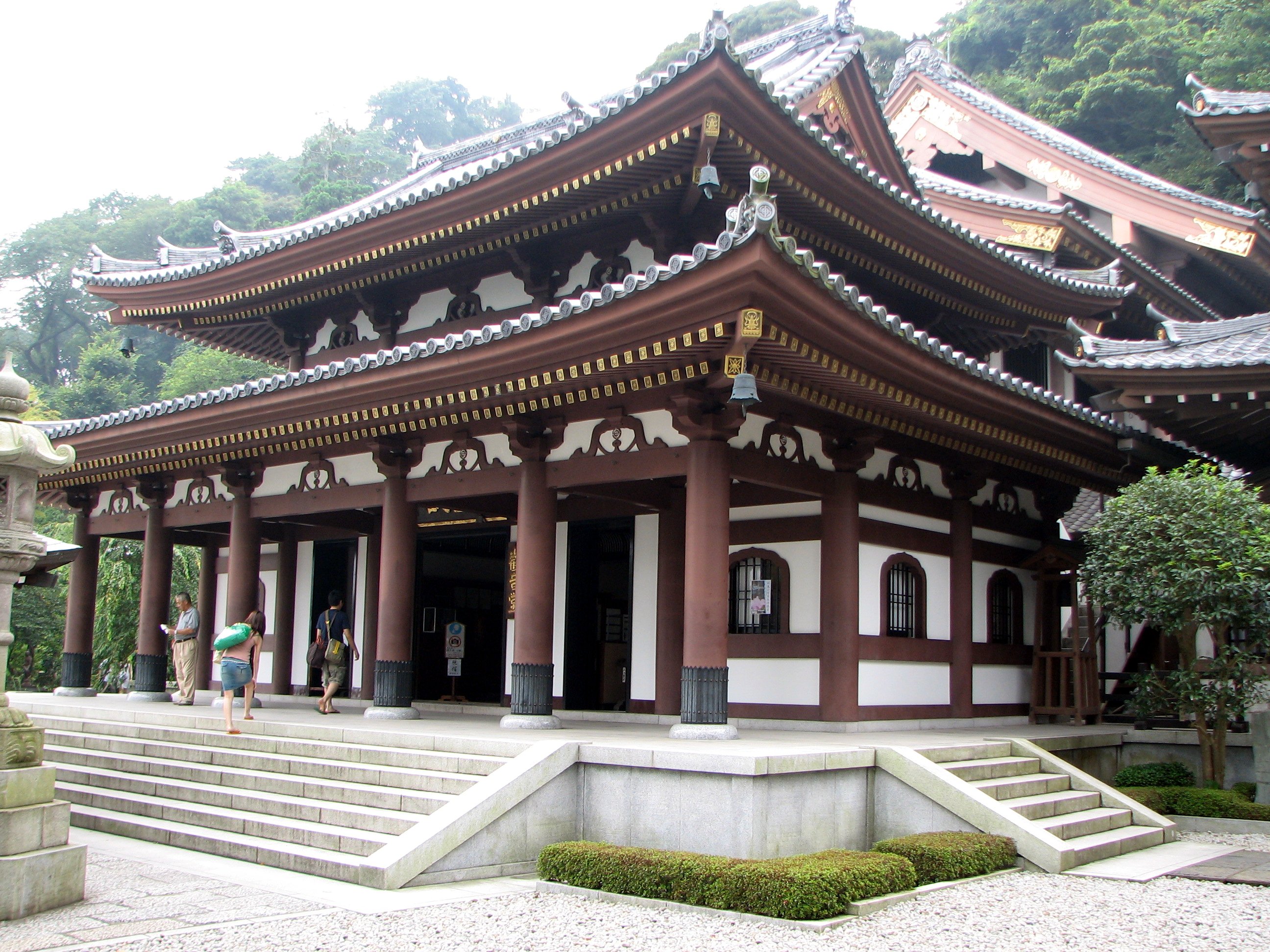- Kaikōzan Hase-dera
Infobox Buddhist temple
name = Kaikōzan Jishōin Hase-dera

img_size =
img_capt = Hase-dera's main building
landscape = Yes
denomination = Pure Land
founded = 736
closed =
founder = Tokudō Shōnin
teacher =
director =
roshi =
abbot =
priest =
rinpoche =
reverend =
address = 3-11-2 Hase, Kamakura, Kanagawa Prefecture
country = flagicon|Japan Japan
phone = (0467) 22-6300
website = [http://www.hasedera.jp Hasedera] nihongo|Kaikōzan Jishōin Hase-dera|海光山慈照院長谷寺 is one of the great Buddhist temples in the city of Kamakura inKanagawa Prefecture ,Japan , famous for housing a massive wooden statue of Kannon. The temple is the fourth of the 33 stations of theBandō Sanjūsankasho pilgrimage circuit dedicated to the goddessBenzaiten .The temple originally belonged to the
Tendai sect of Buddhism, but eventually became an independent temple of Pure Land sect.English language pamphlet from Kaikozan Hasedera]tatue
The statue is the largest wooden statue in Japan, with a height of Convert|9.18|m|ft|1, and is made from camphor wood and gilded in gold. It has 11 heads, each of which represents a different phase in the search for enlightenment. In medieval Japanese Buddhism, a common iconography depicted
Kannon with eleven hands and often with a thousand arms.According to legend, the statue is one of two images of Kannon carved by a monk named Tokudō in
721 English language pamphlet from Kaikozan Hasedera] . The camphor tree was so large, according to legend, that he decided that he could carve two statues with it. One was enshrined inHase-dera in the city of Nara,Yamato Province , while the other was set adrift in the sea to find the place that it had a karmic connection with. It washed ashore on Nagai Beach on theMiura Peninsula near Kamakura in the year736 . The statue was immediately brought to Kamakura where a temple was built to honor it.urrounding area
The temple also commands an impressive view over Kamakura’s bay and is famous for its
hydrangea s, which bloom along the Hydrangea Path in June and July. The temple is built on two levels and also includes an underground cave. The cave, called "benten kutsu" cave, contains a long winding tunnel with a low ceiling and various statues and devotionals to Benzaiten, the sea goddess and the only female of theSeven Lucky Gods in Japanese mythology.Kaikozan Hase-dera is also part of the Kamakura pilgrimage circuit, also consisting of 33 sites, [ [http://www.onmarkproductions.com/html/kannon-pilgrim-kamakura.shtml Kannon - Goddess of Mercy--Pilgrimage in Japan] ] and is station 4 of the 33 temples of the Kantō Pilgrimage.
References
External links
* [http://www.hasedera.jp Hasedera]
Wikimedia Foundation. 2010.
